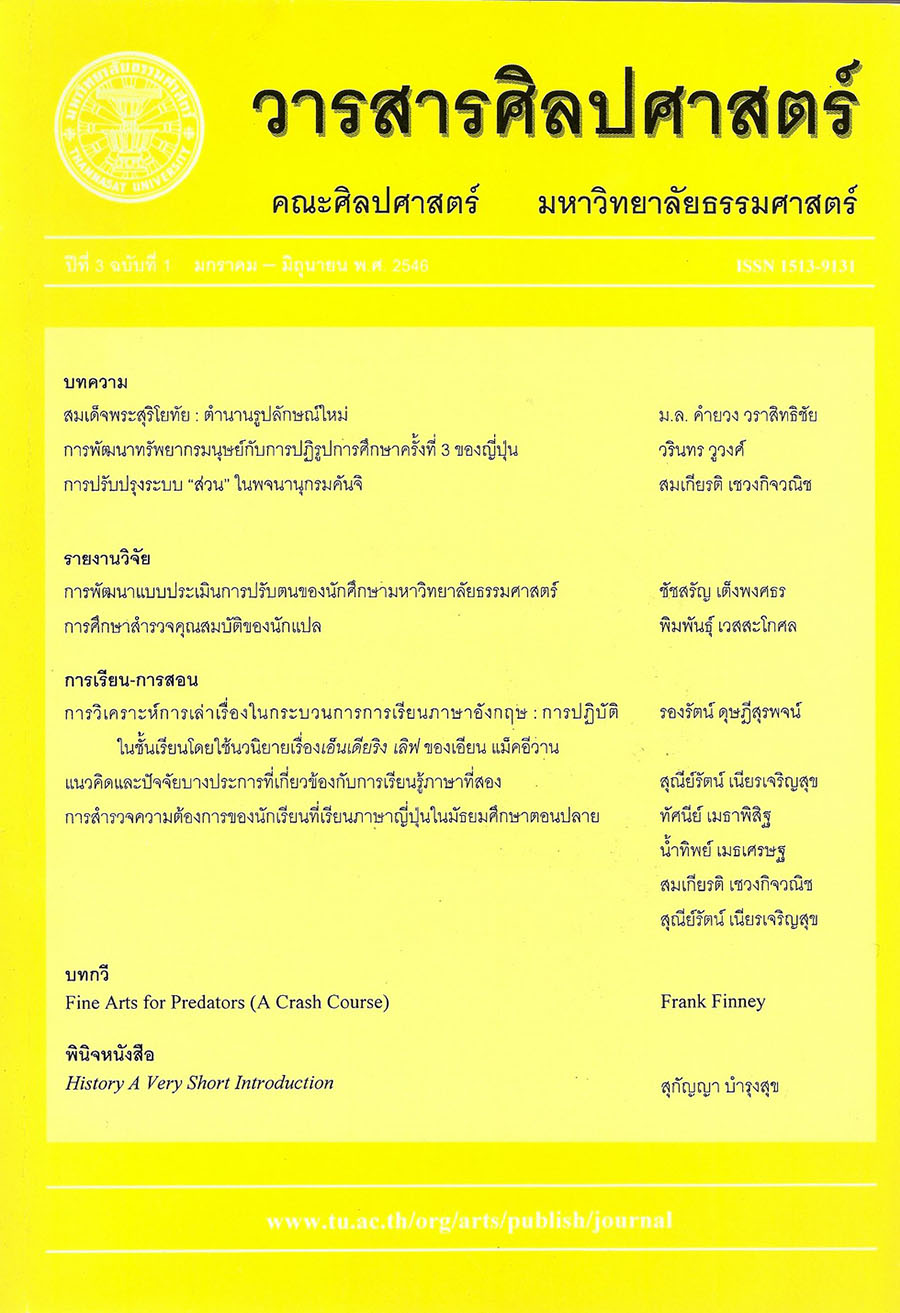การปรับปรุงระบบ "ส่วน" ในพจนานุกรมคันจิ
Main Article Content
บทคัดย่อ
พจนานุกรมอักษรคันจิปัจจุบัน ส่วนใหญ่ใช้ระบบ “ส่วน” (redical) ในการค้นอักษรคันจิตามพจนานุกรมชื่อ (Kouki Jiten) แต่ระบบนี้ยังมีปัญหาหลายประการบ่อยครั้งที่ผู้ใช้พจนานุกรม โดยเฉพาะผู้ศึกษาภาษาญี่ปุ่นชาวไทยไม่สามารถระบบ “ส่วน” ในการค้นที่ถูกต้องได้
วัตถุประสงค์ของบทความนี้คือ การศึกษาวิเคราะห์ว่าพจนานุกรมอักษาคันจิในปัจจุบันมีการปรับปรุงระบบ “ส่วน” ให้ผู้ใช้พจนานุกรมสามารถหาคันจิที่ต้องการได้อย่างมีประสิทธิภาพมากขึ้นหรือไม่ อย่างไร และเป็นประโยชน์ต่อผู้ใช้ที่เป็นผู้ศึกษาภาษาญี่ปุ่นชาวไทยจริงหรือไม่ โดยก่อนอื่น จะกล่าวถึงปัญหาของระบบ “ส่วน” ใน จากนั้นเป็นการสุ่มสำรวจพจนานุกรมจำนวน 7 เล่มที่วางขายในท้องตลาดว่ามีการปรับปรุงระบบ “ส่วน” อย่างไรและวิเคราะห์ว่าการปรับปรุงเหล่านั้นเหมาะสมหรือไม่ หลังจากนั้นจะรายงานผลการสำรวจโดยใช้แบบสอบถาม ถามผู้ศึกษาภาษาญี่ปุ่นชาวไทยเกี่ยวกับ “ส่วน” ของอักษรคันจิและนำผลที่ได้เปรียบเทียบกับระบบ “ส่วน” ในพจนานุกรม 7 เล่ม ที่สำรวจก่อนหน้านี้ และท้ายสุดเป็นบทสรุป
Howadays, the traditional radical system (the one employed in the Chinese dictionary named ‘Kouki Jiten’) is used in most Japanese character, or dictionary users, especially Thai students, to correctly determine the radicals of many Kanji.
The aim of this paper are (1) to study the radical systems in Kanji dictionaries in current use to see if any improvements have been made; (2) if there are improvements, to determine what these improvements consist of; and (3) to investigate whether there improvements are actually useful are briefly explained, and then the radical systems of seven Kanji dictionaries are studied. Next, the results of a questionnaire regarding Kanji radicals are reported, and these results are compared with the systems used in the seven dictionaries surveyed. Finally, conclusions drawn from the investigation are presented.


